People-First, Performance-Focused: Linking HR Efforts to Bottom-Line Success
Despite HR’s new and powerful place in business, many leaders concerned with the bottom line struggle to understand the return on investment for HR’s activities, and many in HR struggle to communicate their value. But bridging human resources to the business isn’t an impossible task; in fact, it’s getting easier thanks to sophisticated HR tech and new access the department has to business leaders and their goals.Ken Matos, the director of marketing insights, and Keren Kozar, senior people and culture officer at HR tech platform HiBob says that the best way to make the connection is with what they call people-first HR.“People coming into the workforce are expecting a leader who genuinely cares about them and genuinely wants to see them be successful in the workplace,” said Kozar in a From Day One webinar on linking HR strategy to the bottom line. “[People-first HR] means that you’re considering your people. They’re not just a number.”“Every single department wants to contribute to a thriving company,” she said, but that may mean different things to different people. “For some, that 100% means the bottom line. For some people, that’s going to mean having an industry-disrupting product, but at the end of the day, happy, engaged employees who feel like they are contributing to an organization that cares about them are going to be the most successful, and that’s how a company is going to thrive.”The Latest and Greatest Business Expense: Artificial IntelligenceCompanies are cutting big checks for artificial intelligence–powered tools and all their promises, and entire organizations are receiving directives from the top: Start using artificial intelligence. But there’s little direction about how to use it, and the tech is still new to many users. Even without detail, departments will be asked to report how it’s improving their work.Ken Matos, Ph.D., the director of market insights at HiBob spoke during the webinar (company photo)Treat AI like a hypothesis to be tested, said Matos. “The first thing is to understand your theory of change for AI.” Identify the problems you believe an AI tool will solve, and “once you have that, you can move on to measurement.” Measure whether people are using it, then track how they’re using it and what they’re producing. “If you know what that chain is supposed to look like, you can pick key places where there are doubts or possibility for failure and focus on measuring those bits. And if the end result is what you’re looking for, then odds are that the whole thing worked.”Linking HR to the Bottom LineIf you want to get business leaders to listen, find out what motivates them. If they want to increase revenue, then it’s your job to identify how people affect revenue with not just what they do, but how they do it.“You can articulate to a leader that you want to get sales revenue up, and here are a bunch of enablers, or obstacles,” Matos said. “My job is to make sure those enablers are maximized. Here’s how and how these obstacles are removed.” With that, those business leaders will start seeing you as an ally, not an admin.And if you’re going to vouch for the efficacy of HR and its work, then you have to speak the language of the business. Kozar once worked for a company where the leader was “100% a numbers guy” who cared only about the balance sheet. “He used to say, ‘HR, you’re so touchy feely.’ And my response would be, ‘people are a measurable metric. They matter. That is a data point. People’s feelings are actually a data point. You need to consider it, just like you would consider absolutely any other analytic that factors into your business decision.’”This can’t end with employee sentiment surveys, though. “We often talk about how to align with leaders and how to communicate with them, but it’s just as important to make sure that HR leaders are speaking to every level of the business,” she said. “So talk to individual contributors, your entry-level folks. The best feedback that I get is from the individual contributors and entry-level people that I’m just sitting with at lunch. That’s how I’m going to synthesize anecdotal feedback and deliver that back to leaders in a way that they’re not going to get through an engagement survey.”Those who chafe against the notion of people-first HR do so because they “don’t realize how feelings change the effectiveness of their business,” said Matos. Think of it this way: How many times have you avoided emails or a project because there’s a person on your team who slows down the work, or is simply a pain to work with?Matos often speaks to business leaders who wonder why it’s their responsibility to motivate the workforce. Maybe you can’t motivate them, he said, but you can certainly demotivate them. “You can strip away their natural desire to do their job, from micromanaging to disrespect to not being communicative. All of these are things under your control.”Editor’s note: From Day One thanks our partner, HiBob, for sponsoring this webinar.Emily McCrary-Ruiz-Esparza is an independent journalist and From Day One contributing editor who writes about business and the world of work. Her work has appeared in the Economist, the BBC, The Washington Post, Inc., and Business Insider, among others. She is the recipient of a Virginia Press Association award for business and financial journalism.





